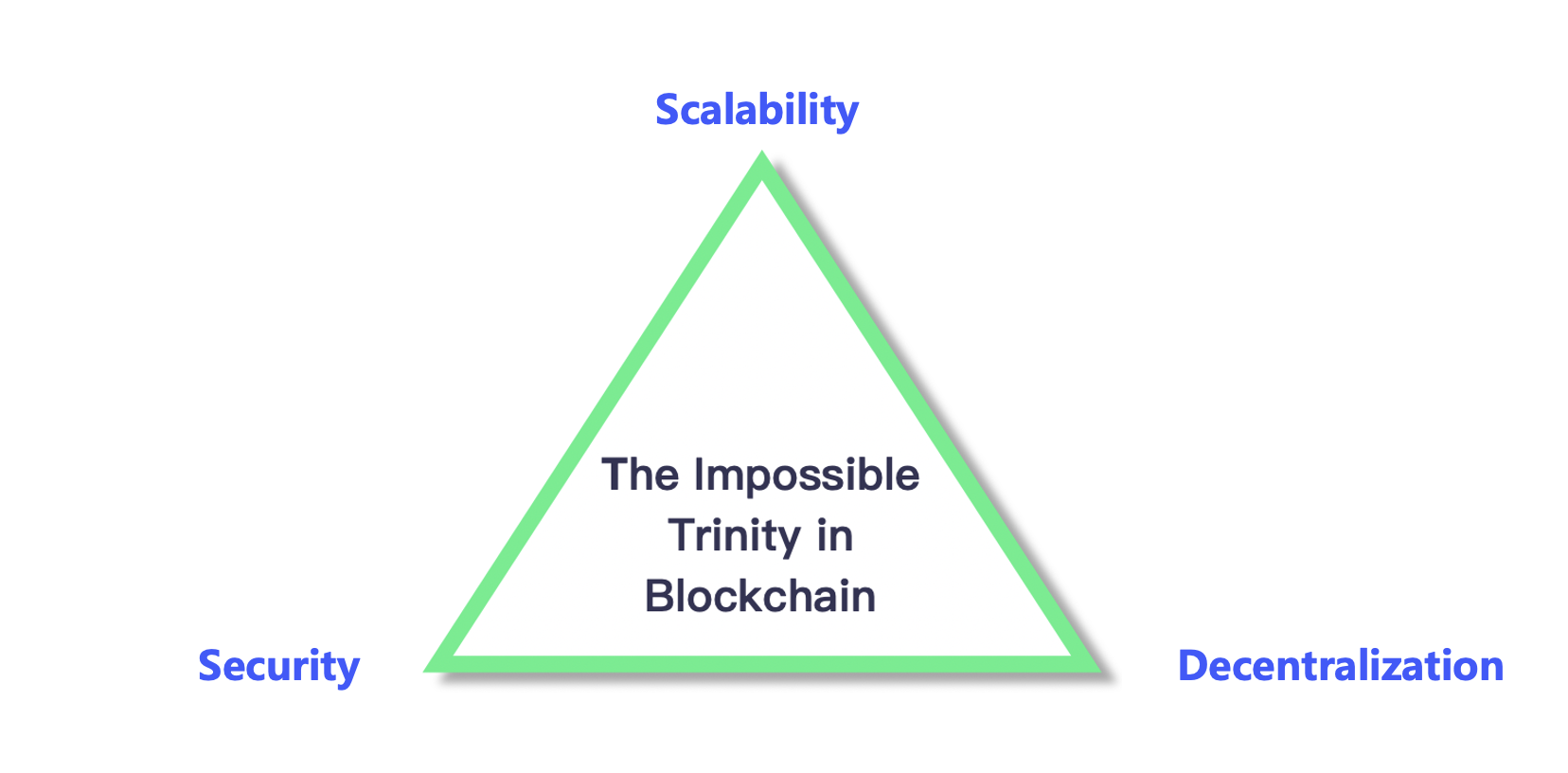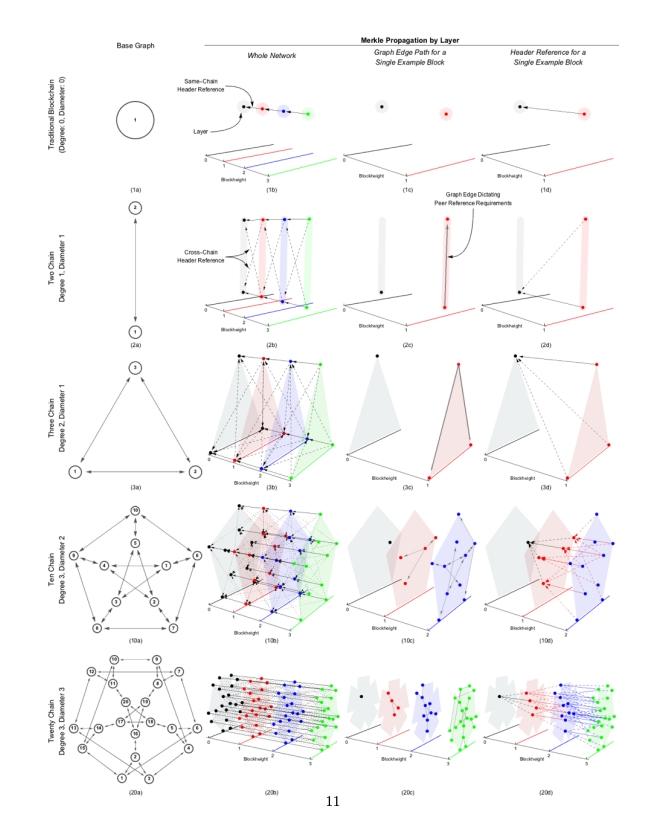KDA (Kadena) : The Most Balanced Solution to the Impossible Trinity
As underlying blockchain infrastructures, public chains have thrived in recent years, rising to prominence one after another. Projects including Solana, Avalanche, Near Protocol, and Polygon have made their debut and are racing against one another to take the throne and become the most high-performing public chain.
Of the many high-performing public chains, one project stands out. As most competitors use PoS or POS-like solutions to scale, the chain has adopted PoW as the bottom-layer logic for scaling, and that project is our focus today: Kadena.
The biggest innovation of Kadena is that the chain combines the PoW consensus mechanism with the chainweb model to resolve the impossible trinity in blockchain. Multicoin partner Kyle Samani even listed Kadena as the most balanced project in solving the scalability problem of the impossible trinity in blockchain in his article titled Models for Trustless Computation.
The impossible trinity refers to a situation where the proposal or solution fails to meet the targets in three different aspects at the same time. For instance, when drafting financial policies, lawmakers face a trilemma that includes the free flow of capital, fixed exchange rates, and independent monetary policies. The impossible trinity in blockchain means that blockchains fail to be decentralized, secure, and scalable (high-performing) at the same time.

Figure 1. The Impossible Trinity in Blockchain
So how does Kadena solve this problem?
- Decentralization: Kadena uses Bitcoin’s time-tested decentralized PoW consensus mechanism.
- Scalability: Kadena’s public blockchain scales by providing the chainweb mechanism to asynchronously produce many blocks on different chains at the same height, with each block requiring a fraction of the hash power of the total network. This configuration drastically increases the number of transactions per second over the total network. Braiding multiple chains together through a revolutionary multi-chain structure, Kadena improves throughput and scalability while maintaining the security and integrity of coins.
- Security: Pact makes it easy to design safer smart contracts. Readable for non-developers, it automatically detects bugs and protects users from exploits on Ethereum and other insecure platforms.
Additionally, under the PoW mechanism, any modification to the blockchain would require the consent of the majority of nodes, which means that the attacker must own more than half of the hash power (51% attack) to tamper with the network. This makes attacks on Kadena extremely expensive and therefore unlikely. Furthermore, as the chain uses the chainweb structure, hackers would have to go through consensus verification on each chain. Such rigorous reviews make it even more difficult to attack and tamper with the network. The combination of PoW and chainweb provides an inherent, decentralized shield for Kadena, which is part of its unique value.

Figure 2. The Specific Structure of the Chainweb
(Source: Chainweb whitepaper)
Thanks to its innovative architecture, when trading cryptos on Kadena, users can enjoy ultra-fast transactions and extremely low fees. Moreover, KDA, the chain’s native token, can be used to pay for hashing expenses on Kadena.
Different from other mainnet coins, KDA is in itself a multi-chain (right now, Kadena supports 20 chains) and multi-signature network. Each chain corresponds to a different public key, i.e., one wallet can have one or more public keys, meaning that users need to select the corresponding chain when transferring or receiving cryptos.
Consider the following example: Alice is about to make a transfer to Bob.
Alice’s KDA account balance consists of assets on three chains: 0, 1, and 2, and Bob asks her to transfer the cryptos to the chain 2 address of his KDA account.
Therefore, Bob needs to provide Alice with his chain 2 address, and Alice has to choose from chain 0, 1, or 2 when making the transfer.
When transferring cryptos on the same chain, the sender pays a small gas fee.
Let’s continue with our example: Suppose Alice chooses to make the transfer with her assets on chain 2, then she will have to pay a smaller gas fee.
For cross-chain transfers, both the sender and the recipient need to pay a gas fee, but because Kadena has introduced a gas station, the fee to be paid by the recipient can be filled up automatically. As such, even if the cryptos are transferred across different chains, only the sender needs to pay the gas.
In the case above: Suppose Alice chooses to transfer the cryptos with her assets on chain 0 or chain 1, then she’ll need to pay a small gas fee because it is now a cross-chain transfer; the gas to be paid by Bob will be automatically filled by the gas station, so he doesn’t need to pay the gas.
Moreover, if a chain under your KDA account is not yet activated, when the recipient receives cryptos on the chain for the first time, the sender will need to pay a small gas fee.
Going back to Alice and Bob, suppose Bob’s chain 2 address has never been involved in any transaction, then Alice must pay two gas fees, which are 1) the gas for the transaction and 2) the fee required for activating Bob’s chain 2 address (both fees are small).
Overall, Kadena is an outstanding project with a promising future. You can now go to CoinEx Wallet to manage KDA. Click here to download the app and try out KDA.
For more information about Kadena (KDA), please go to:
Kadena website: https://kadena.io/
Tokenomics: https://medium.com/kadena-io/the-kadena-token-economic-model-8090d7545eef
Market cap ranking: https://coinmarketcap.com/currencies/kadena/
Buy KDA: https://www.coinex.com/
Manage KDA: https://wallet.coinex.com/download








